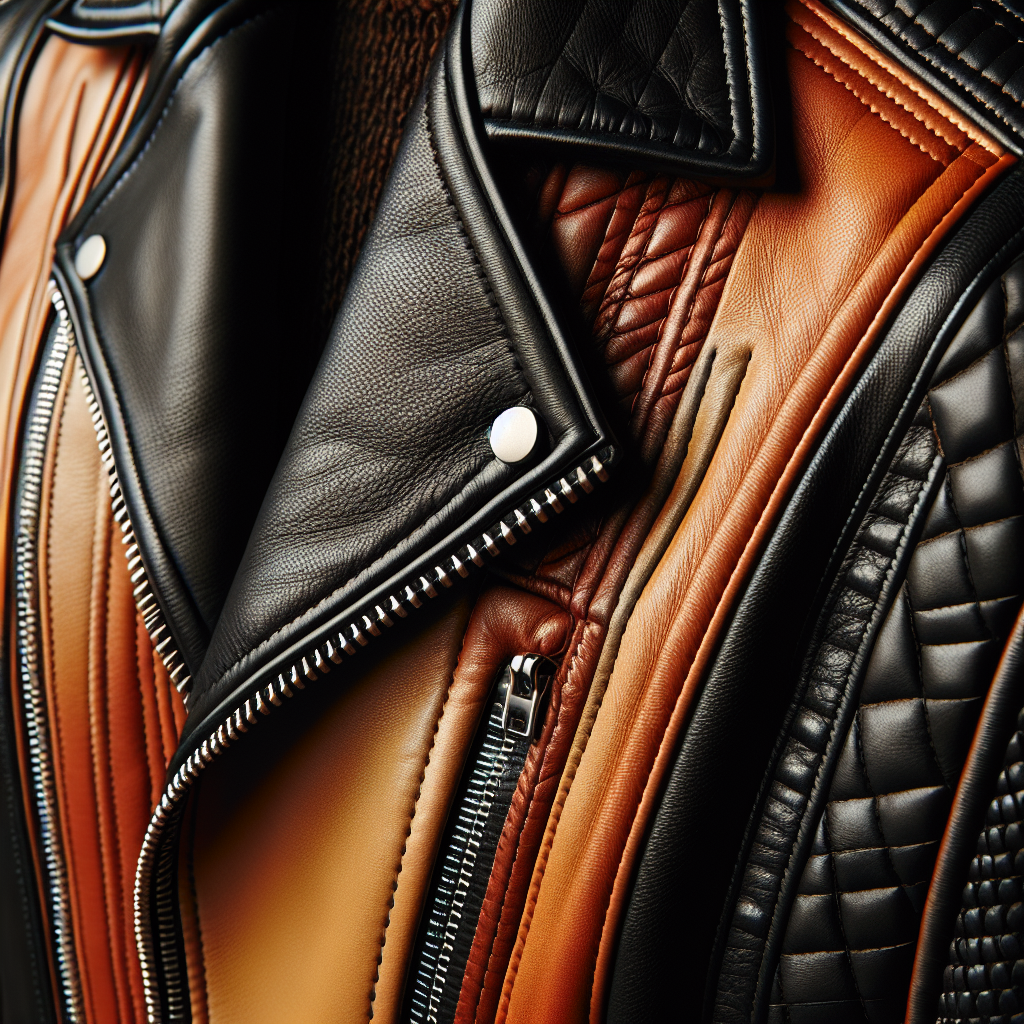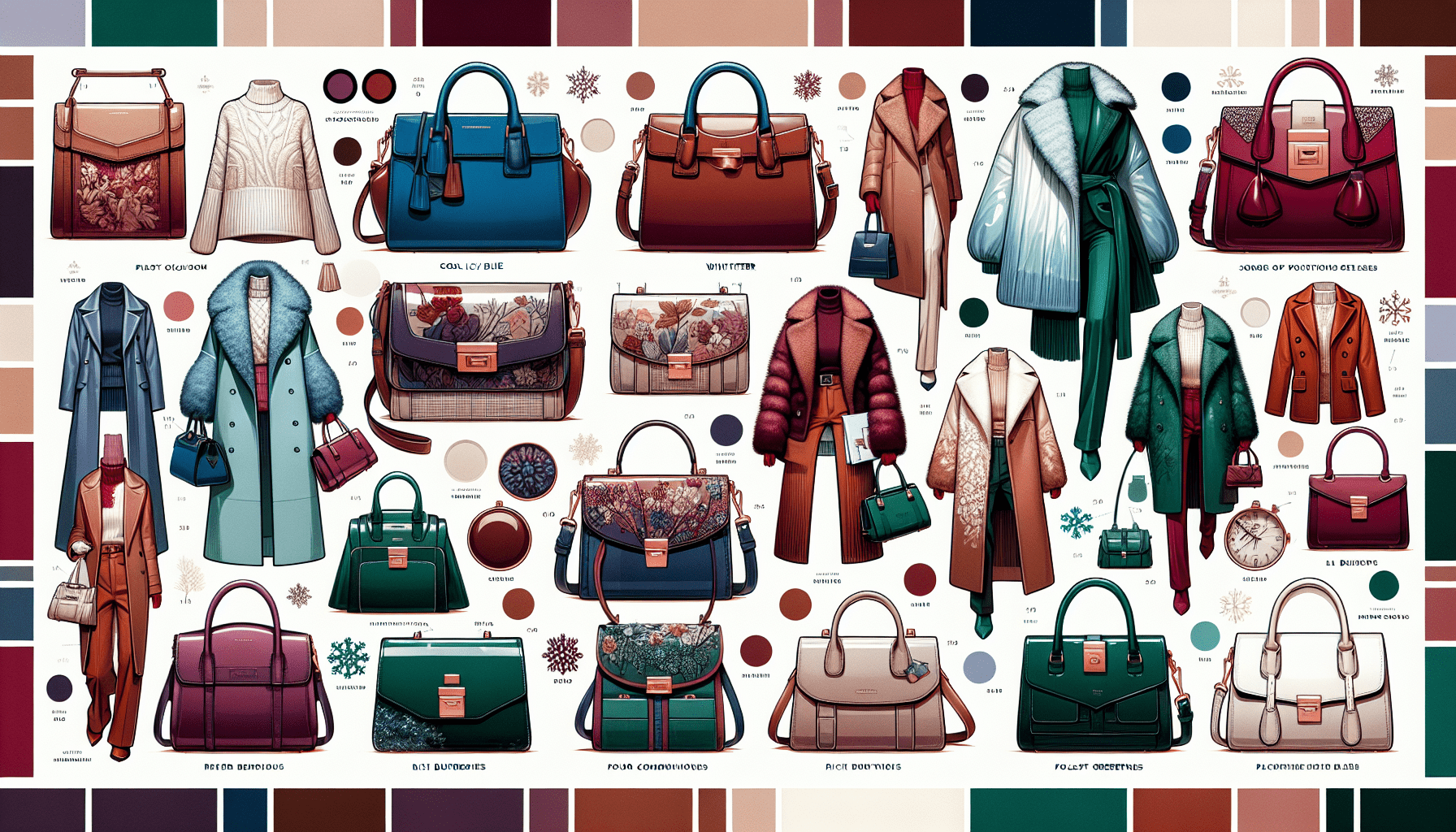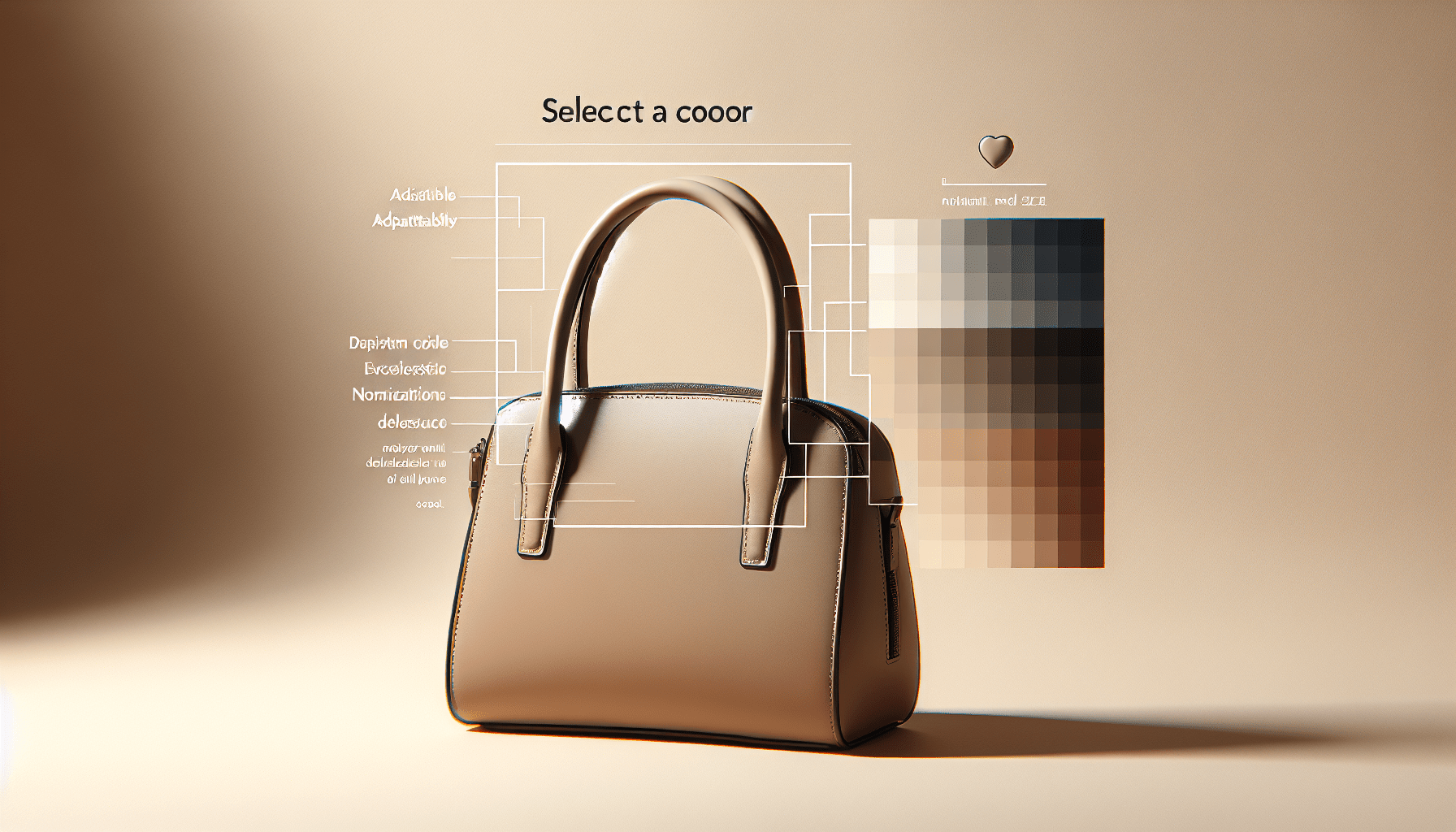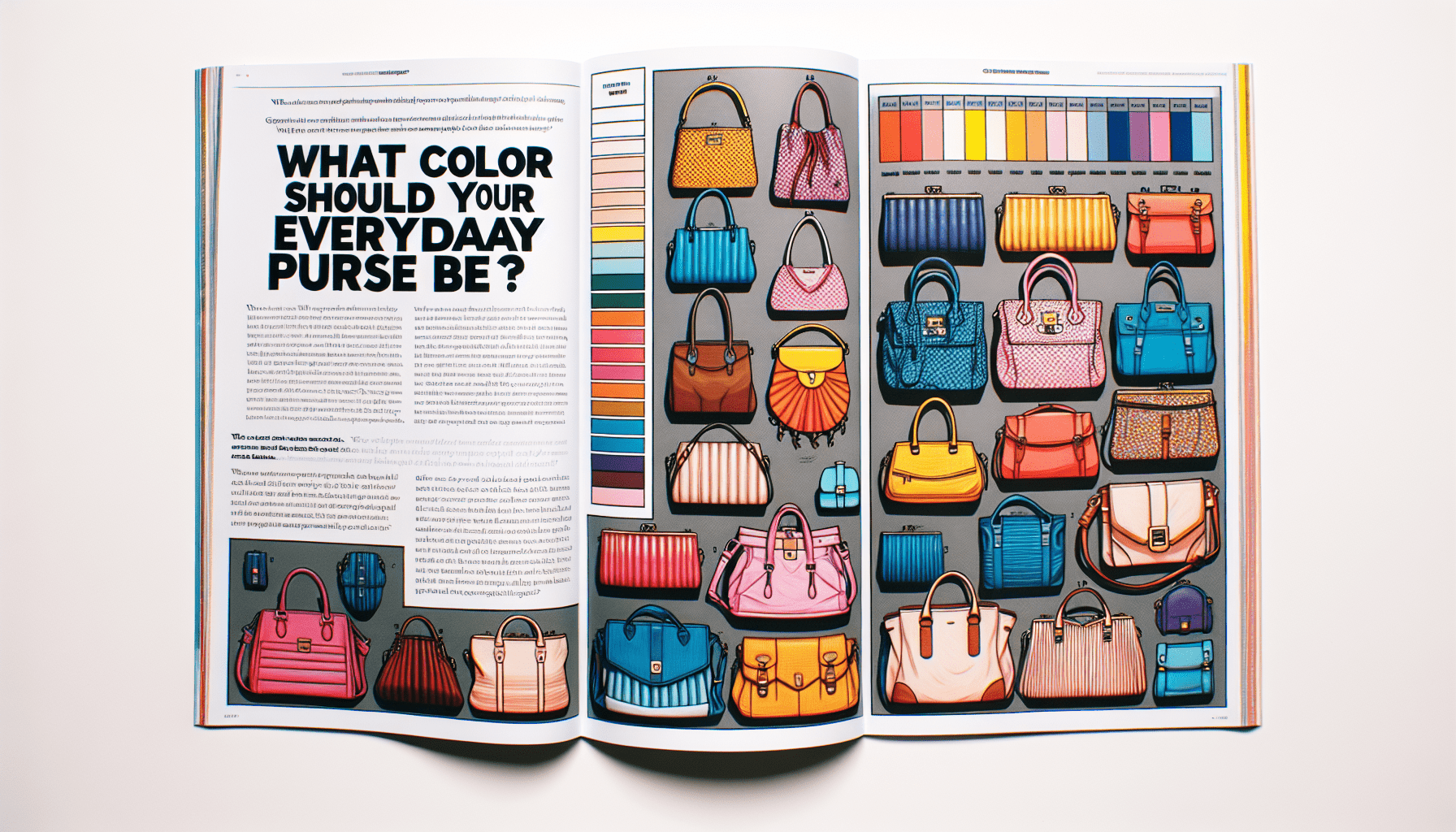Can I Mix Different Leather Colors In One Look
You’ve always been a fashion risk-taker and love experimenting with different styles. But when it comes to mixing leather colors in one look, you can’t help but wonder if it’s a fashion faux pas or a trendy statement. Fear not, fashionista! Mixing different leather colors in one outfit can actually create a unique and eye-catching ensemble. Whether it’s a combination of black and brown, or bright and pastel hues, this article explores the dos and don’ts of mixing different leather colors to help you confidently rock this fashion trend.
Understanding Leather as a Material
When it comes to fashion, leather has always been a popular choice for both its durability and its timeless appeal. It is important to understand the different types of leather available and the characteristics that make it such a unique material.
Types of Leather
Leather comes in various types, each with its own distinct qualities. Full-grain leather is considered the highest quality and is known for its natural markings and durability. Top-grain leather is slightly more processed but still retains its strength and natural look. Genuine leather is made from the layers of hide that are left after the top-grain is removed, and is often used for more affordable leather goods. Faux leather, on the other hand, is a synthetic material designed to mimic the look and feel of real leather.
Characteristics of Leather
Leather is known for its strength, flexibility, and natural beauty. It is a breathable material that can adapt to the shape of your body over time, making it a comfortable choice for clothing and accessories. Leather also has a unique texture and can vary in its softness or suppleness depending on the type and quality of the leather.
How Leather Changes over Time
One of the wonderful aspects of leather is that it ages beautifully, developing a unique patina and character over time. As you wear it, leather may become softer, more supple, and take on a rich, lived-in appearance. This characteristic of leather adds to its overall appeal and makes it a durable and long-lasting material.
The Fashion Rulebook on Leather
When it comes to fashion, there used to be traditional color coordination guidelines to follow when wearing leather. However, fashion rules have evolved, and breaking them can lead to stylish and unique looks.
Traditional Color Coordination
In the past, traditional fashion rules dictated that leather colors should match or be within a similar color family. This meant that if you were wearing a black leather jacket, you should pair it with black leather boots or a black leather bag. While this approach can still create a sleek and put-together look, it is no longer the only way to wear leather.
Breaking the Fashion Rules
Fashion is all about expressing your personal style and creativity, and breaking traditional fashion rules can lead to innovative and interesting looks. Mixing different leather colors can add a unique touch to your outfit and make a bold fashion statement.
The Evolution of Leather Fashion
Leather fashion has evolved over the years, and designers and fashion enthusiasts have embraced the trend of mixing different leather colors. This shift in perception has allowed for more freedom and experimentation with leather, resulting in exciting and contemporary fashion choices.
Criteria for Mixing Leather Colors
While mixing different leather colors can be a fun and stylish way to express yourself, there are some criteria to consider to ensure a cohesive and well-put-together look.
Consider the Occasion
When mixing different leather colors, it’s important to consider the occasion and the overall vibe you want to convey. For formal or professional settings, it is best to stick to more classic and neutral leather color combinations. On the other hand, for casual or creative events, you can be more adventurous and mix bold and contrasting leather colors.
Assessing your Personal Style
Your personal style plays a significant role in determining how you mix leather colors. Some individuals prefer a more monochromatic look, sticking to shades within the same color family. Others may enjoy experimenting with contrasting colors to create a bold and eye-catching outfit. Understanding your personal style and what you feel most comfortable in will guide you in selecting the right leather color combinations.
Factoring in Other Elements of your Outfit
When mixing leather colors, it’s essential to consider the other elements of your outfit, such as your clothing, accessories, and shoes. The colors of these pieces should complement each other and work harmoniously with the leather colors you have chosen. Pay attention to the overall color palette and ensure that everything comes together in a cohesive and visually appealing way.
Principles of Color Matching
To successfully mix different leather colors, it’s important to understand the principles of color matching and how they apply to leather fashion.
Understanding Color Theory
Color theory is an essential aspect of fashion and can greatly influence the overall aesthetic of your outfit. Understanding basic color interactions will help you create pleasing and visually balanced combinations. Complementary colors, which are opposite each other on the color wheel, can create a striking contrast when mixed. Analogous colors, which are adjacent on the wheel, can create a harmonious and cohesive look.
The Role of Neutrals
Neutrals play a crucial role when mixing leather colors, as they help to anchor and balance bold or contrasting shades. Colors such as black, white, gray, and beige can act as a canvas for other leather colors and allow them to shine. Adding neutrals to your outfit can create a sophisticated and balanced look, especially when combined with different leather colors.
Creating Contrast and Harmony
When mixing leather colors, it’s important to strike a balance between contrast and harmony. Contrasting colors can create a visually striking effect, while harmonious colors can create a sense of cohesion and fluidity. Experimenting with different combinations and finding the right balance between contrast and harmony will help you achieve a well-rounded and visually appealing outfit.
How to Mix Different Leather Colors
Now that we understand the principles and considerations for mixing leather colors, let’s explore some practical tips on how to achieve a balanced and stylish look.
Creating a Balanced Look
When mixing different leather colors, it’s important to create a balanced look by distributing the colors evenly throughout your outfit. For example, if you’re wearing a black leather jacket, pairing it with brown leather boots and a tan leather bag can create a visually balanced and cohesive look. This approach helps to ensure that no single color dominates the outfit and creates a sense of harmony.
Adding Interest with Contrasting Colors
Mixing leather colors also allows you to experiment with contrasting combinations to create visually interesting outfits. For example, pairing a burgundy leather skirt with a mustard yellow leather jacket can create a vibrant and eye-catching look. Mixing contrasting colors adds depth and excitement to your outfit and can make a strong fashion statement.
Mixing Different Shades of the Same Color
Another way to mix leather colors is by combining different shades of the same color. For example, pairing a light brown leather jacket with dark brown leather boots creates a cohesive and elegant look. Mixing shades of the same color adds depth and dimension to your outfit while maintaining a sense of continuity.
Pairing Leather Pieces
Mixing leather colors not only applies to clothing but also extends to accessories and footwear. Here are some ideas on how to pair different leather pieces.
Leather Jackets and Pants
One classic combination is mixing different colored leather jackets and pants. For a sleek and timeless look, a black leather jacket paired with black leather pants creates a monochromatic ensemble. If you want to experiment with contrasting colors, pairing a tan leather jacket with navy leather pants can create a sophisticated and stylish outfit.
Leather Bags and Shoes
When it comes to leather bags and shoes, mixing different colors can add a touch of flair to your outfit. For a chic and coordinated look, pairing a brown leather bag with brown leather shoes can create a polished and put-together appearance. If you’re feeling bold, combining a black leather bag with red leather shoes can make a strong fashion statement and add a pop of color to your outfit.
Leather Accessories
Leather accessories, such as belts, gloves, and bracelets, also offer opportunities to mix different leather colors. Choosing accessories in complementary or harmonious colors can enhance your outfit and tie the different elements together. For example, a burgundy leather belt paired with a green leather bracelet can create a unique and visually pleasing combination.
Common Leather Color Combinations
While the possibilities for mixing leather colors are endless, there are some classic color combinations that have stood the test of time and always look stylish.
Black and Brown Leather
The combination of black and brown leather has long been a fashion staple. You can pair a black leather jacket with brown leather boots or vice versa to create a sophisticated and versatile look. This combination is timeless and works well in both casual and formal settings.
Tan and Navy Leather
The pairing of tan and navy leather is another popular choice. A tan leather bag paired with navy leather shoes can create a chic and elegant look. This combination is perfect for adding a touch of sophistication to your outfit while maintaining a subtle contrast.
Mixing Multiple Leather Colors
For those who want to make a bolder fashion statement, mixing multiple leather colors can create an exciting and unique look. For example, combining a burgundy leather jacket with a mustard yellow leather bag and brown leather boots can result in a visually striking and fashion-forward outfit.
Tips for Wearing Colored Leather
Wearing colored leather can be a fun and refreshing departure from the traditional black or brown options. Here are some tips to keep in mind when incorporating colored leather into your wardrobe.
Choosing the Right Color for your Skin Tone
When wearing colored leather, it’s important to choose shades that complement your skin tone. For warm undertones, colors like burgundy, mustard yellow, and caramel may be particularly flattering. For cool undertones, shades of blue, purple, and gray can work well. Experiment with different colors and observe how they affect your complexion to find the most flattering options for you.
Making Colored Leather the Focal Point
When incorporating colored leather into your outfit, it is often best to make it the focal point of your look. Choose one statement piece, such as a colored leather jacket or pants, and keep the rest of your outfit simple and neutral. This approach allows the colored leather to stand out and be the star of the show.
Pairing Colored Leather with Patterns
Colored leather can be a great complement to patterns in your outfit. For example, pairing a colored leather skirt with a striped or floral blouse can create a visually interesting and fashion-forward look. The key is to balance the colors and patterns, ensuring that they work together harmoniously.
Common Mistakes to Avoid when Mixing Leather Colors
While mixing leather colors can be a fun and creative way to style your outfits, there are some common mistakes to avoid to ensure a polished and cohesive look.
Overdoing it with too many Leather Items
While mixing leather colors is encouraged, it’s important not to overdo it by incorporating too many leather items into one outfit. Choose one or two leather pieces as the focal point and keep the rest of your outfit simple. This approach allows the leather colors to shine and creates a more balanced and stylish look.
Mismatching Tones
When mixing leather colors, be mindful of the tones of each color. Ensure that the colors work well together and do not clash or create a jarring effect. For example, pairing a warm-toned brown leather with a cool-toned navy leather may result in an unbalanced and visually discordant look. Pay attention to the undertones and choose shades that complement each other.
Ignoring the Importance of Quality
While experimenting with different leather colors can be exciting, it’s important not to overlook the quality of the leather itself. Investing in high-quality leather pieces ensures they will age gracefully and withstand the test of time. Poorly made or faux leather pieces may not exhibit the same durability, strength, and natural beauty that genuine leather offers.
Inspiration from Fashion Icons and Street Style Stars
Fashion icons and street style stars are known for their innovative and bold fashion choices. Drawing inspiration from their looks can provide ideas and inspiration for mixing leather colors.
How Celebrities Mix Leather Colors
Celebrities often experiment with different leather colors to create unique and stylish outfits. They are not afraid to push the boundaries and mix contrasting or unexpected combinations. Study the looks of fashion-forward celebrities and take note of the leather color combinations they wear for inspiration.
Street Style Examples of Mixing Leather
Street style is another great source of inspiration for mixing leather colors. Street style stars often showcase their creativity by introducing unexpected color combinations or incorporating different textures into their outfits. Pay attention to the unique and stylish looks of individuals photographed on the streets during fashion weeks or in fashion magazines.
Trending Leather Color Combinations
Fashion trends are constantly evolving, and new leather color combinations emerge each season. Keeping an eye on the latest fashion trends can provide inspiration for mixing leather colors in a current and fashion-forward way. Look for fashion editorials, runway shows, and style influencers to stay up-to-date with the latest color combinations in leather fashion.
In conclusion, mixing different leather colors can be a fun and stylish way to express your personal style. Understanding the types and characteristics of leather, as well as the principles of color matching, will help you create cohesive and visually appealing outfits. Remember to consider the occasion, assess your personal style, and factor in other elements of your outfit when mixing leather colors. Avoid common mistakes, such as overdoing it with too many leather items, mismatching tones, and ignoring the importance of quality. Draw inspiration from fashion icons, street style stars, and the latest fashion trends to create unique and fashion-forward looks. With these tips and guidelines, you can confidently mix different leather colors and elevate your style game.




